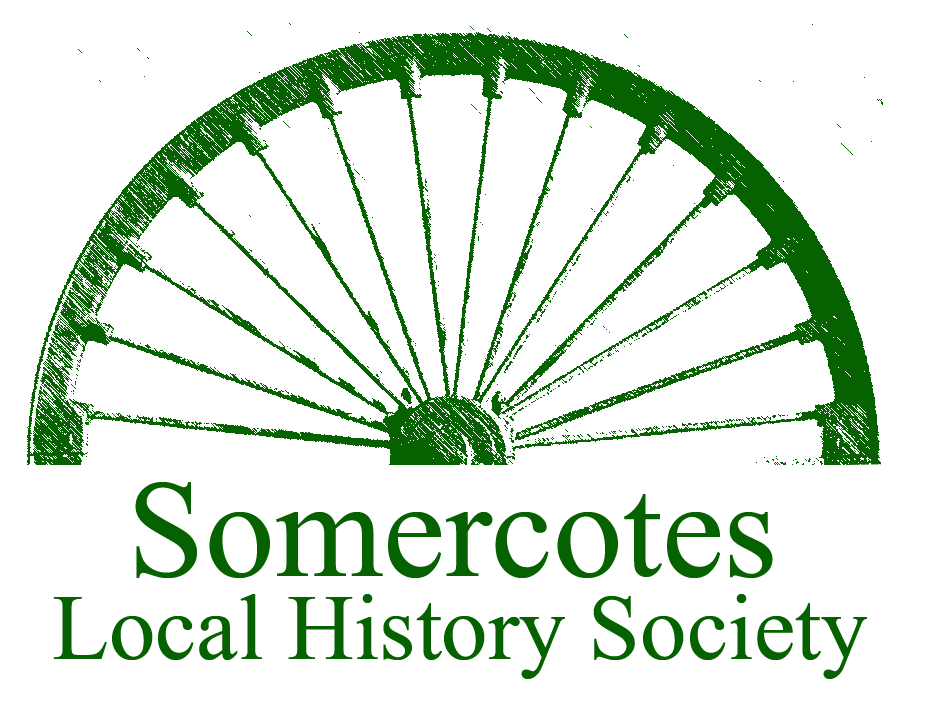






Post Offices in the Parish
by SLHS on
Sunday 17 July 2016
Before the arrival of the railway the only postal system in operation was via the mail coach. The main route for coaches was from Birmingham to Sheffield and return, and originally took the old road which ran through Ripley, Oakerthorpe, Higham and on through to Clay Cross. The main coaching house in the area was the Peacock Inn at Oakerthorpe. As the town of Alfreton began to grow in importance, its wealthier citizens decided that new turnpikes should be constructed and the old road diverted through the town, making the centre at the crossroads between the High Street, King Street, Church Street and Chesterfield Road. Now diverted, the mail coaches called at the Angel Inn and the George Inn.
People living in Somercotes, Riddings, and the surrounding villages would have their mail sent via Alfreton, although only businessmen would have generally used the postal system.
The railways effectively ended the mail coach service, and with the introduction of the universal penny post in May 1840, ordinary people could at last afford to send a letter to their families. As the inhabitants of the area grew and the postal service became standardised, post offices opened in the villages.
PHOTO: Leabrooks Post Office, dating from the early 1900s
| POST OFFICES IN 1829: | |
|
Alfreton |
John Smedley was the postmaster. Posting houses were the Angel Inn and the George Inn. South mail arrived at 12.00 pm and north mail arrived at 9.00 am. From Sheffield to Birmingham the mail coach called at the George Inn at 9.15 am and travelled through Ripley, Derby, Burton and Lichfield. The Amity coach left at 8.30 am (the Amity was not a mail coach). From Birmingham to Sheffield, the mail coach called at the Angel Inn at 12.30 pm and travelled through Higham, Chesterfield and Dronfield. The Amity coach also called at the George Inn at 1.00 pm everyday except Sunday. |
| POST OFFICES IN 1831: | |
| Alfreton | John Smedley was the postmaster. Letters from London and Birmingham arrived at 11:00 am and were despatched every morning at 10:30 am. Letters from Sheffield arrived at 10:30 am and were despatched at 11:00 am. The Royal Mailcoaches from Sheffield and Birmingham both called at the George Inn. The Amity coaches had been replaced with the Quicksilver coaches, which both called at the Angel Inn for passengers. |
| POST OFFICES IN 1849: | |
| Alfreton | John Smedley was the postmaster.By 1849 the railways had already made an impact on the postal sercvice and all reference to the mail coaches had dissappeared.Letters arrived from London, via a mail cart, at 4.00 am and were despatched at 9.20 am. Letters from Mansfield arrived at 8.25 am and were dispatched at 4.45 am the following morning.Although the post box was closed at 8.30pm, letters would be accepted up to 9.10 pm for an additional payment of 1d (which was called the "Late Fee". Letters to Somercotes and Riddings were received (and despatched) through the Alfreton office. |
| POST OFFICES IN 1857: | |
| Alfreton | Thomas T Cutler was the postmaster. Letters arrived from all parts (of the parish) by 2.00 am and were despatched at 11.00 am. Letters from the north arrived at 6.00 am and were despatched at 6.54 pm. The enrty makes no mention of letters arriving from elsewhere. |
| Greenhill Lane | The post operated through Henry Neale, who acted as an agent. He ran a chemist and drug store. |
| Riddings | The post operated through William Thornley who acted as an agent. He was a grocer and tallow chandler |
| Somercotes | There is no reference to an agent for the Royal Mail in the trade directory of 1857 for Somercotes, although this does not mean that there wasn't one.. |
| POST OFIICES IN 1876 & 1881 | |
| Greenhill Lane | Luke Evans was the sub-postmaster. Letters were sent through the main Post Office at Alfreton. |
| Leabrooks | Joseph Cartledge was the receiver of mails. Letters were sent through the main post office at Alfreton. |
| Pye Bridge | Pye Bridge did not have its own Post Office. There was a post box that was cleared at 5.20 pm weekdays and 9.30 am on Sunday. The nearest Post Office was at Somercotes. |
| Somercotes | Mrs Hannah Robinson was the sub-postmistress. Letters were sent through the main Post Office at Alfreton. |
| POST OFFICES in 1895: | |
| Leabrooks | John Bakewell was the sub-postmaster. Letters were sent through the main Post Office at Alfreton. |
| Somercotes | George H. Booth was the sub-master. Letters were sent through the maon Post Office at Alfreton. There was a post box located at Lower Somercotes. George was also the agent for an Annuity & Insurance Office, and also arranged express deliveries for parcels (probably through the railway). |
PHOTO: Leabrooks Post Office, 2005, prior to closure
| POST OFFICES IN 1912 & 1925: | |
| Leabrooks | Frederick Ball was the sub-postmaster. Letters were sent through the main Post Office at Alfreton. |
| Somercotes | Miss Sarah Ellen Smith was the sub-postmistress. Letters were sent through the main Post Office at Alfreton. The Post Office at Somercotes was also a Telegraph Office, where telegrams could be sent from. |
| POST OFFICES IN 1932: | |
| Leabrooks | The sub-master is not recorded for this year, but it is known that it was Frederick Ball, who was also listed for 1912 and 1925. |
| Somercotes | The sub-postmaster is not recorded for this year. A reference is made to the correct address to be used for the village, which was Somercotes, Alfreton, Derbyshire (as all of the letters would still have been sent through the main Post Office at Alfreton). |
